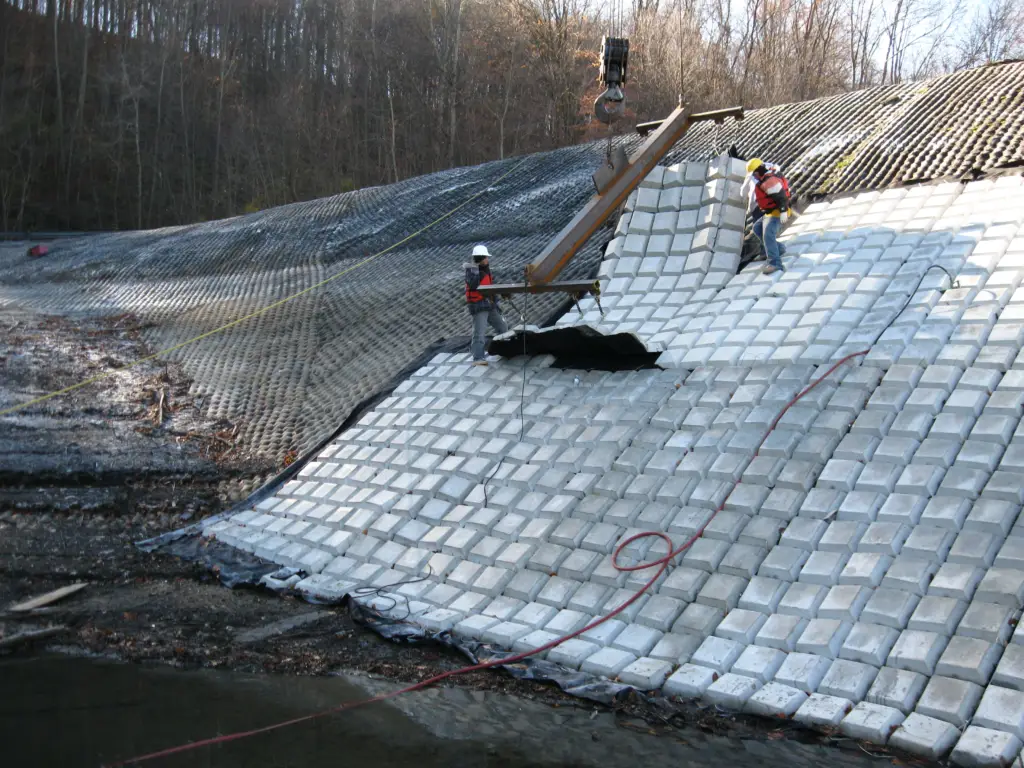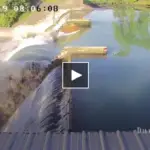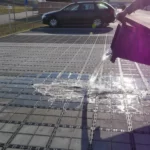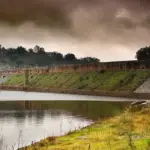In the realm of environmental protection, safeguarding against erosion is a critical endeavor. One innovative solution gaining prominence is the use of concrete blankets to fortify earthen dykes. These robust coverings serve as a shield against the erosive forces of water, ensuring the structural integrity of dykes and contributing to sustainable land management practices.

The Threat of Erosion to Earthen Dykes
Earthen dykes play a vital role in managing water resources, preventing flooding, and protecting valuable agricultural land. However, these structures are vulnerable to erosion, especially in areas prone to heavy rainfall, storm surges, or fluctuating water levels. Erosion compromises the dyke’s stability, leading to breaches and potential disasters. Recognizing this challenge, engineers and environmentalists are turning to concrete blankets as a resilient solution.
Concrete Blankets Unveiled
Concrete blankets, also known as erosion control blankets or mats, are engineered coverings designed to provide a protective barrier for earthen surfaces. Comprising a blend of concrete, geotextiles, and other reinforcing materials, these blankets offer a versatile and durable defense against erosion.
Key Benefits of Concrete Blankets for Earthen Dykes:
- Erosion Resistance: The primary function of concrete blankets is to resist erosion. The robust concrete layer prevents soil displacement caused by water flow, wave action, or wind, ensuring the dyke remains intact and effective.
- Quick Installation: Concrete blankets are relatively easy to install, offering a rapid and efficient solution for reinforcing earthen dykes. Their quick deployment is crucial for preventing erosion in emergency situations or during periods of heightened risk.
- Flexibility and Adaptability: These blankets conform to the natural contours of the earthen dyke, providing a seamless and adaptable protective layer. This flexibility is essential for maintaining the dyke’s effectiveness while accommodating changes in terrain.
- Environmentally Friendly: Concrete blankets are often designed with environmentally friendly materials, minimizing their ecological impact. Additionally, their erosion control capabilities contribute to the preservation of surrounding ecosystems by preventing sediment runoff.
- Long-Term Durability: Engineered for longevity, concrete blankets offer a durable solution that withstands the test of time. This long-term durability is crucial for ensuring the ongoing protection of earthen dykes, even in challenging environmental conditions.
Case Studies: Concrete Blankets in Action:
- Mississippi River Levees, USA: In response to the frequent threat of flooding along the Mississippi River, concrete blankets have been successfully employed to reinforce earthen levees. This proactive measure has enhanced the resilience of the levee system, preventing erosion and safeguarding communities.
- Mekong Delta, Vietnam: The Mekong Delta, susceptible to storm surges and rising sea levels, has seen the implementation of concrete blankets to fortify earthen dykes. This sustainable approach aims to protect vital agricultural land and the livelihoods of local communities.
Conclusion
Concrete blankets stand as stalwart guardians against the erosive forces that threaten earthen dykes. As climate change intensifies the frequency and severity of extreme weather events, these innovative solutions play a pivotal role in fortifying vital infrastructure. By embracing the protective embrace of concrete blankets, we not only shield our landscapes from erosion but also foster a sustainable and resilient future for generations to come.






















